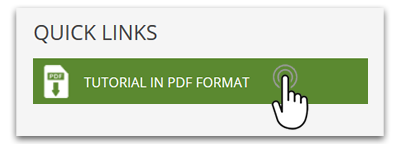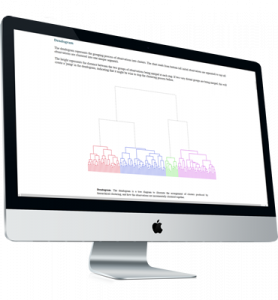
Bass forecasting
Get answers for the most frequently asked questions about the Enginius Bass forecasting module. For a quick overview, we suggest you check the introductory video first.
Bass forecasting in a nutshell

The Bass diffusion model is used to forecast the sales of a new product or service that has no close competitors.
It can be used to forecast the long-term sales pattern of a product when one of the following is true:
(a) the product has recently been introduced and sales have been observed for a few time periods, and (b) the product has not yet been introduced, but it resembles another product in the market whose sales history is known.
The model helps to predict: (a) the number of customers in the target segment that will eventually adopt the new product or service, and (b) when they will adopt it.

Download the tutorial

To download the Enginius tutorial in pdf format: (1) Follow the link below. It will open an example data set, then (2) Click on the link in the upper-left corner of the screen.
Frequently asked questions
In most applications of the Bass model, the selection of analog products will be the critical decision in the successful implementation of the model.
Although similarities of product/technology features between the focal product and the analog are one aspect to consider in selecting suitable analogs (particularly the price points of the two products), the primary consideration should be similarities between the focal product and the analog(s) with respect to expected customer behaviors.
Here is a list of criteria developed in the seminal work of Rogers (1962) that is useful to keep in mind:
(1) ease with which the customer can try the product/technology before purchase,
(2) relative advantage of the product over existing alternatives,
(3) compatibility of technology with existing practices,
(4) Ease of use of the technology, and
(5) Observability of the “benefits in use” of the technology.
Generally, it is best to start with the simple Bass model, because it often provides forecasting performance comparable to that of the advanced Bass model, especially if the proposed marketing plan for the new technology is already well defined.
If you wish to explore how the forecasts would change with changes in marketing plans for the technology, it would be helpful to explore those scenarios using the advanced Bass model.
The simplest (and our recommended approach) would be to specify eventual market potential on a scale of 0% to 100%, where 100 represents the size of the target population.
In this specification, the market potential at the introduction of the new technology could be low, but it could grow over time to reach a larger percentage of the target population.
Using this approach, the user would still have to translate model forecasts, which are reported as the percentage penetration of the new product/technology at any time t, into the corresponding absolute number of units sold based on the actual size of the market at that time.
Within Enginius, it is also feasible to specify the market potential based on the actual size of the target population, and also to allow for that size to grow over time.
Typically, three types of scenarios could be considered:
(1) A pessimistic scenario (or analog), where both the p and q parameters, and perhaps also the eventual market potential, are likely to be low,
(2) An optimistic scenario where either, or both p and q, are high, and possibly the market potential is also high, and
(3) a middle-of-the-road scenario where one or more of the three parameters, p, q, or market potential are around their average levels (say p around 0.03, q around 0.4, and eventual market potential is less than 40% the size of the target population).
You can also consider specific scenarios, such as “customers will quickly try the product through free trial offer” or “the installed base will switch slowly to the new technology.”
The range of forecasts could reflect the uncertainties surrounding the diffusion of the new product or technology.
If one or more analogs give similar results (as compared to the other analogs), it would be useful to carefully explore what might explain why those forecasts are similar to each other, and also why they are different from the forecasts from the other analogs.
Once the user is satisfied that the analogs are all appropriate, then the forecasts reflect the intrinsic uncertainties about the future. In that case, it would be best for the user to explore various strategies to prepare for the very different futures that might evolve.
Such strategies include hedging, contingency planning, “bet-the-farm,” as well as “core strategies” to implement today regardless of which forecast turns out to be true in the future.



